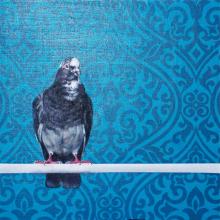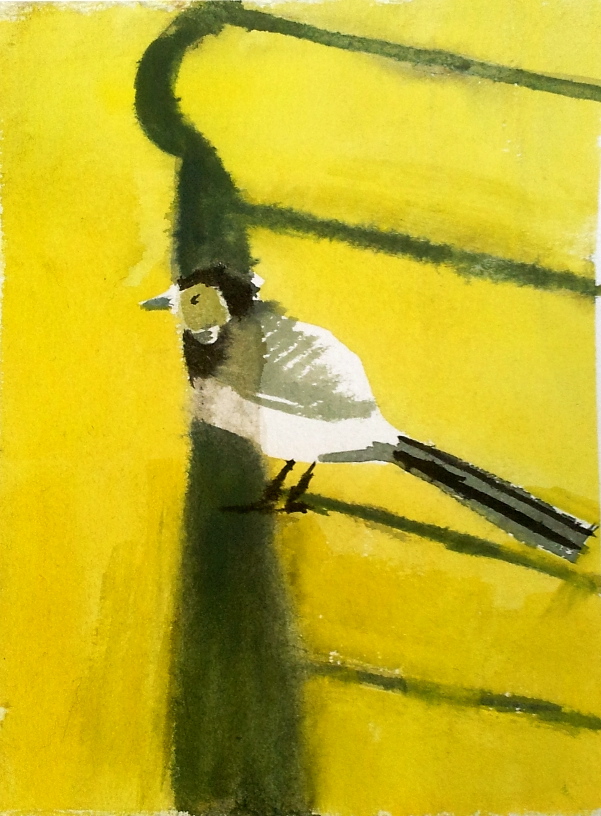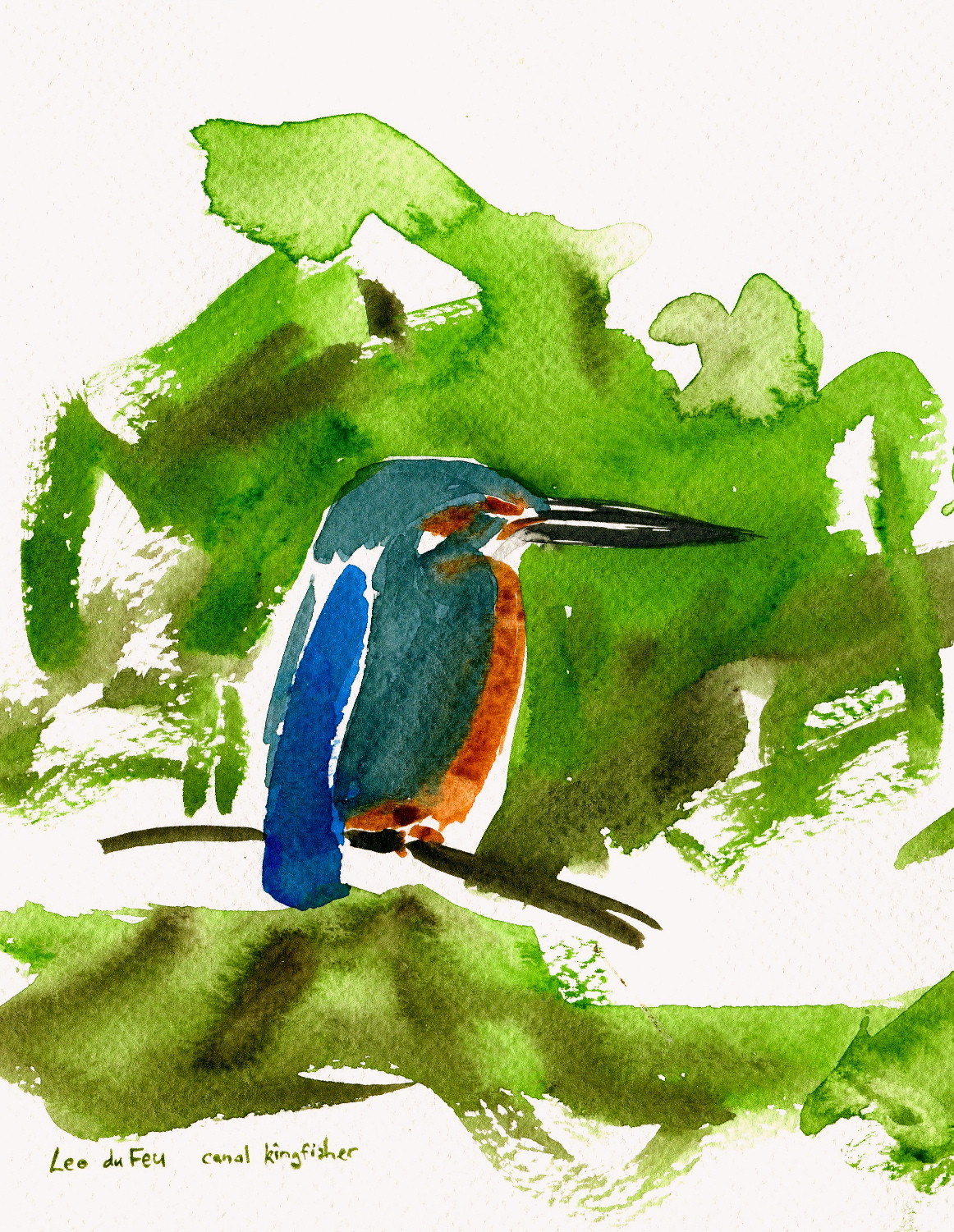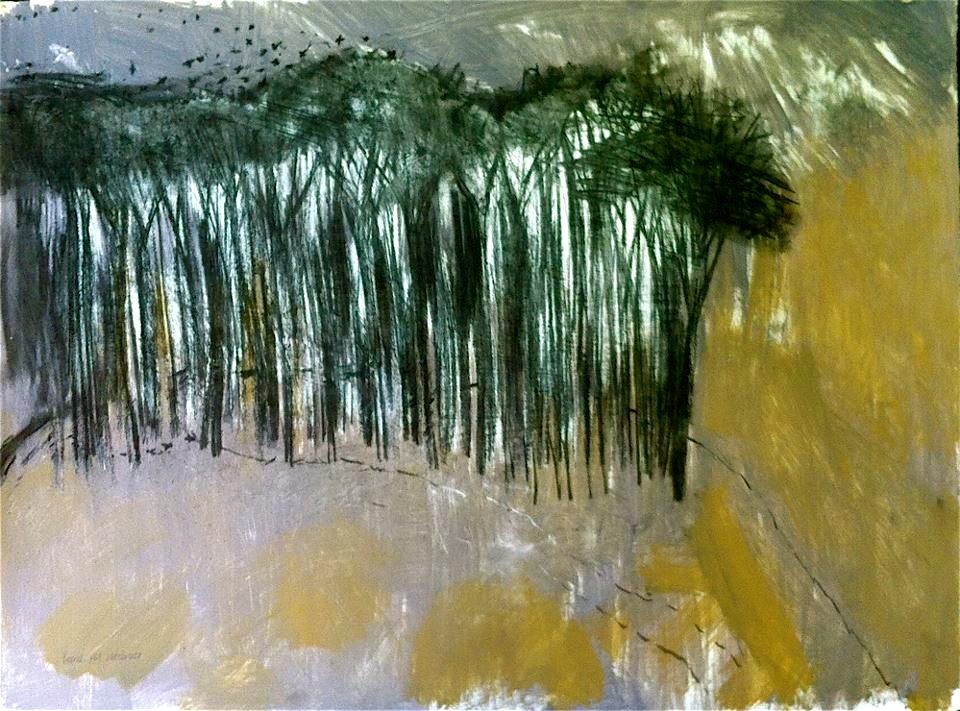
The brief to artists for this month's exhibition Neighbourhood Birds at Bon Papillon was to depict 'birds of garden and field that are often overlooked and victimized'.
The result is an aviary of at least 20 put-upon species, including a peacock. Clearly, some artists have bigger gardens or are more flexible about briefs than others.
What appear here are a very few favourites, chosen from a list which could easily have included 10 more using an interesting variety of techniques and media.
First among beakfuls is Stanley Bird's 'Pied Pigeon not Pigeon Pie' (above right) – an exquisite study in accurate detail strangely de-contextualised or re-contextualised by the addition of a patterned background.
The effect is rather odd. I find feral pigeons – their proximity, omniverous cheek, and nauseating deformities – rather unsettling at the best of times. To find one, as here, apparently roosting on a wardrobe rail – capable of flight in an interior space, defiantly out of place and inedible – is doubly so. The work made me smile and flinch simultaneously.
Less unnerving, but also playing on birds' sudden jerks from stillness into motion, is Kittie Jones's 'Wagtail in Shadows' (below). I liked this creature's capacity to flit between the bars, to exist at once in the real world of hard edges and smudgier light. This is a very simple but satisfying work in watercolour and gouache.

Simplicity also characterises Leo du Feu's apparently straightforward field observation in 'Kingfisher Study II' (below). The stripping-down of form into blocks of colour is wonderfully effective here, although there is more going on than meets the eye. Du Feu's bird is slightly squatter, its bill more assegai-like than one would find in nature. This is a human reaction to, and interpretation of, the bird in its surrounds. Strict visual taxonomy it's not.

There are in this exhibition a great many corvids – rooks, crows and magpies dominate the show. What this says about artists in general, Scottish artists in particular, art-buying Scots or the tastes of the gallery owners I don't know. However, corvids – with their uncompromising stares and disquieting intelligence – are certainly a rich source of inspiration.
Below is Susan Smith's uno print 'The Rook'. Who could resist this bird's glittering eye, its violent malice, the delicious spray of blood and tissue splattering a wooden altar? Well, certainly not this reviewer. Perhaps because I was hungry.
Finally, we come to Janet Melrose's 'Rookery'. I grew up in the shadow of just such a stand of elms, and well recall the raucous garrulity of its inhabitants swaying unperturbed in even the fiercest gales. Melrose depicts the flock perhaps returning at dusk. Who, one wonders, has left the trails which link the foreground to the trees? Do these paths lead from safety into danger? Or is the person in the woods himself a source of threat, lurking in the shadows, a shotgun at his shoulder, loaded, deadly and waiting to fire? AM

Neighbourhood Birds continues at Bon Papillon (15 Howe Street) until 1 June.
Have you got a different favourite in this exhibition? If so, write to us and say why via email: spurtle@hotmail.co.uk Twitter: @theSpurtle Facebook: Broughton Spurtle